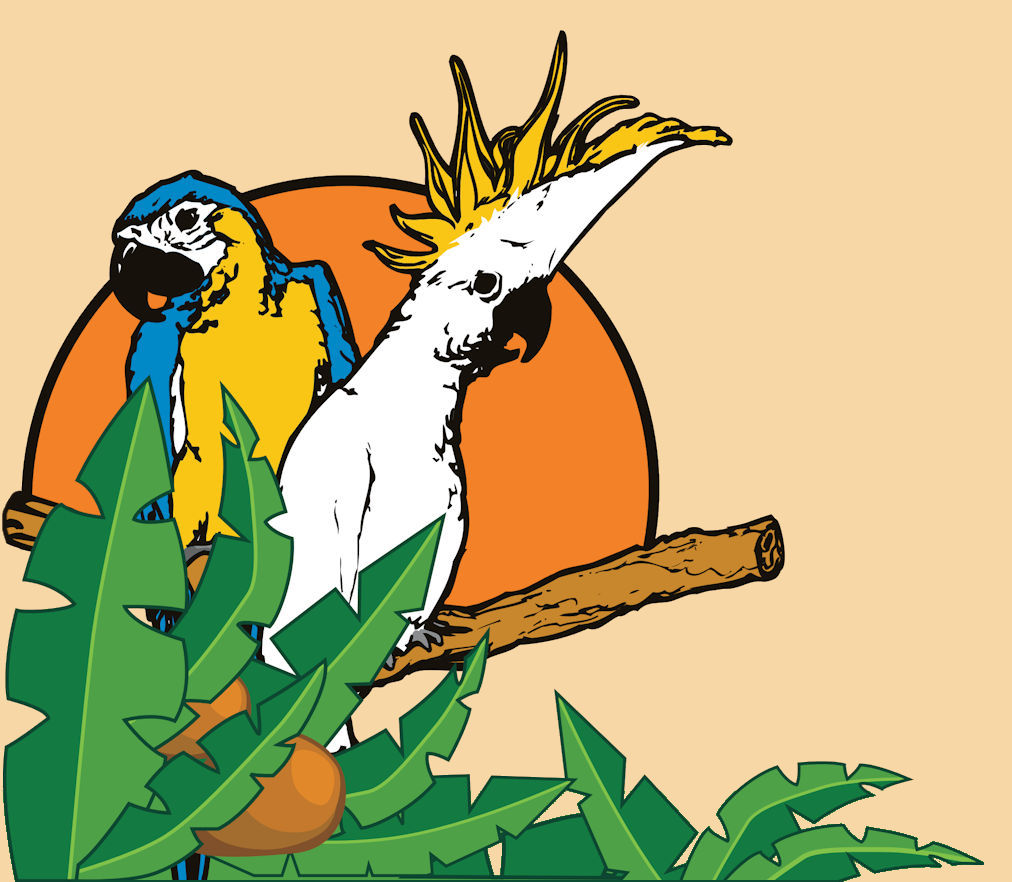Stepping up is a basic, but very important building block that all feathered friends should be familiar with. It is useful for moving birds in and out of cages, to and from stands and people, or retrieving them from the floor or unsafe situations. It is easy for us to get too comfortable or lazy with this simple training tool because tame birds seem to instinctively respond. Sometimes birds can forget as well! Some parrots that do not step-up may not understand for a number of reasons: they were not trained to step-up, they were trained to be moved with sticks/perches, they have free reign of the house or room and do not rely on people. Babies and sometimes untamed birds or adults may need practice, or a refresher course. Many young birds will learn fast, especially if hand fed and handled frequently.
Category: Training
Potty Training
It seems that bird owners, and non-bird owners alike are aware of how often birds poop. These frequent “bathroom breaks” are necessary to keep themselves light in order to take flight at a moments notice. With their intelligence, it is not surprising that many bird owners have trained their parrots to eliminate on command! With time and patience, you can try training your bird too.
1. Be aware of how frequently your bird goes potty while out of its cage. Try observing cues such as fidgeting, squatting, or nipping that might be your birds way of telling you he needs to go! Sometimes in unfamiliar spaces, a bird will be more wary of its surroundings and need to go more frequently, or forget its training.
2. Choose a key phrase, and be consistent! Multiple family members should use the same signal and / or key phrase. Popular ones include: “Go potty”, “Bombs away”, and “Go poop”, and are sometimes accompanied by a slight up and down shake of the hand.
3. Because parrots are visual, sometimes they will recognize their stand, a trash can, or a napkin as an appropriate target if they are trained consistently with one of these items.
4. If you observe your bird naturally going potty about every 15 minutes, have your bird step-up a few minutes prior to the 15 minute mark, and hold him over a trash can, newspaper, or place him on a small training stand. The trick is to be patient, and be repetitive! Repeat your key phrase every few seconds. When your bird goes potty, make it special for your bird by offering praise in the form of a scratch/pet, treat, or by just plain being excited. If your bird does not go within a minute or two, take a break, but try again after another minute.
Repeat this process of potty break trial and error, and hopefully you will be rewarded by having your bird eliminate on command. Some parrots are naturally very tidy and may only potty while in their cages or on their stands. Other birds may learn to hold it until an appropriate time. It is good practice to frequently allow your bird the opportunity to use the bathroom while out with you. Also, never punish your bird for pooping on you or your furniture- accidents will happen.
Shoulder Perching
It’s a stereotypical scene, from Pirates of the Caribbean and other high sea adventures, to Baretta, Polly, and almost any film with a parrot involved- the parrot on the shoulder. This may look cute, and it certainly frees up your hands, but most current bird books and advice articles agree with keeping birds off the shoulder, but why?
A common view is that birds that are higher than your eye level will display dominance and height aggression. It certainly seems that way when you ask your parrot to “step-up” from your shoulder or cagetop / playstand and he growls, nips, and lunges. A newer perspective this behavior is that your parrot feels more secure. Sometimes, trying to remove them from their comfort zone will cause them to behave the same way, but it should be interpreted as defensive, not aggressive.
With a new bird, it is best left off the shoulder for a number of reasons:
– The bird may not be trained to sit on shoulders.
– The bird can easily reach out to bite your ears or face.
– You want to keep all your piercings and jewelry intact.
– It is important to first establish basic step-up commands with the bird on your hands.
With a bird that you have an established relationship with, there are still some guidelines:
– Does your bird step-up from your shoulder when asked without biting or running?
– Does your bird step-up from within or on top of the cage without biting or running?
– Is your bird calm around new people or new environments?
Even when startled or scared, a very tame bird may bite to catch itself from falling or as a warning.
If the answer to any of these is “NO”, it’s a good idea to go back to the basics. Not only is the step-up command an important training tool, it is a way to build trust and confidence. In many ways, the shoulder should be a privilege once a good relationship with the bird has been established.
